- Home
- Susan Wittig Albert
The Tale of Hawthorn House Page 29
The Tale of Hawthorn House Read online
Page 29
This evening, Bosworth had jotted two notes. One had to do with a happy event—happy to his way of thinking, at least, although he understood that there were those who were not so pleased. First reading of Miss Woodcock’s and Major Kittredge’s banns, he wrote. Wedding scheduled for early October, to be celebrated at St. Peter’s. The second seemed to him much less happy, although again, there were those who felt otherwise. Baby Flora’s mother officially resigns her claim, he wrote.
He put down his pencil with a sigh. It was unnatural, this business of being a mother one minute and not the next. Badgers did not do things that way. A mother badger had her babies and raised them until they were old enough to go out on their own. She would be aghast at the idea of handing one of her cubs to another mother badger to raise. He shook his head. He would never understand how such a thing could have happened, nor did he want to try, since he was only a simple badger and the motivations of Big Folk were entirely beyond his comprehension.
A sudden shadow blackened the sky overhead and descended directly onto the ground in front of him. “Hullooo,” it said, in a hollow voice.
“Hullo to you, Professor,” said Bosworth, pleased to see his old friend. For the shadow was none other than Professor Galileo Newton Owl, D.Phil, a very old, very large tawny owl who lived in a great hollow beech tree at the top of Cuckoo Brow Wood. The professor was well known and widely respected for his studies in astronomy (his specialty was celestial navigation) and applied natural history, especially where it concerned small furry creatures with distinctive tastes. His nocturnal field trips took him across all of the Land Between the Lakes. Nothing much happened that was beneath his notice, so to speak.
Bosworth hefted the teapot. “Two cups left,” he announced, pouring one for his friend and refilling his own. “Haven’t seen you here for some time.”
This was the case, for while the professor regularly extended invitations to his earth-bound friends to join him for dinner or dessert-and-coffee in his beech-tree apartments (and had even put up a ladder), Bosworth rarely accepted. Houses that swayed from side to side in the slightest breeze made him seasick. Might as well live on a houseboat in the middle of Lake Windermere. The Sixth Rule of Thumb kept him from openly criticizing his friend’s living and dining arrangements, so he simply declined. And although the professor occasionally called at The Brockery, he felt cramped and claustrophobic belowground, so the two friends usually met out of doors.
“I’ve been out of town,” the professor said, accepting the cup the badger handed him. “Visiting my cousin, Old Brown. The one whooo lives on the island, youoo know.”
Ah, yes. Old Brown was the owl whose annoying encounter with the saucy Squirrel Nutkin had been immortalized by Miss Potter. “I hope you found him well,” said Bosworth, pushing the plate of Parsley’s macaroons forward with his paw. He knew they were the professor’s favorite.
“Very well, yes, indeed,” the owl replied. He accepted a macaroon and added sugar and lemon to his tea. “But he tooold me something I found exceedingly difficult tooo credit. It concerns the fox whooo lived at Foxglove Clooose and a certain duck from Hill Top Farm. Have yooou heard this tale?”
The badger chuckled. “Yes, we’ve all found it hard to understand. But it is true—or at least, it has been reported as true by a number of individuals, all of whom claim to have a certain knowledge of it.”
Bosworth had learned a long time ago that truth was often a matter of point of view, and that it was better not to believe a thing, particularly a thing that seemed at first hearing to be incredible, until the report had been corroborated by multiple sources. This one had. He had heard it first from Jackboy the Magpie. Since Jackboy’s reports were garbled and easily misinterpreted, he had sought confirmation, which had come first from a passing hedgehog and then from a trusted observer, Felix the Ferret. Felix had escaped from his master and gone to live under the bridge at Wilfin Beck, where he could keep a close eye on all the neighborhood comings and goings, especially those of the rabbits in the nearby warren.
The professor snapped at his macaroon. “What this wooorld is coming tooo, I don’t knooow,” he muttered.
“It is certainly strange,” admitted the badger. “We entertained that fox here some days ago. He expressed a great interest in the duck’s whereabouts, especially after he heard that she was sitting on a nest of eggs. I assumed that the fellow had the usual foxy sort of interest. I wouldn’t have been surprised to hear that he’d raided the barn and had her and her eggs for dinner.” He rolled his eyes. “Little did I know.”
“Sooo it’s truooe, then,” the professor said gloomily. “The fox has run off with the duck, and they have set up housekeeping in some unknown place.”
“Perhaps it is more accurate to say that the duck has run off with the fox,” said Bosworth, “or that they have run off together. If you happen to hear any news of them, I should like to know, for the record. I’ve noted the fact of her absence, but I’m reluctant to attribute it to a romantic involvement until there is some proof.”
“Romance.” The professor rolled his eyes. “Well, I suppooose there have been odder things. Cats whooo kept company with dogs, and mice who fancied cats. I even knew an owl whooo adopted a mouse tooo keep his address booook for him. One hopes the fox and the duck will be happy together, although one doubts it very much.” He helped himself to another macaroon. “Old Brown never quite gets his stooories straight. There was something about the duck’s eggs hatching into dragons.”
“Dragons,” chuckled Bosworth. “Actually, they hatched into tortoises.”
“Tortoises!” The owl opened both eyes very wide.
“Indeed. The duck apparently took them from the nest where the mother tortoise deposited them. The hatchlings have been returned to their proper parent.”
“Pity,” murmured the owl. “I’ve had tortoise eggs ooonly once, when a friend obtained some that had been imported from the Orient. Quite tasty. I would love to have sampled these.”
The badger nodded regretfully. Eggs were a taste that he and his friend had in common, and had he found these in the right condition, he would likely have made quick work of them. “However,” he added, “I understand that the infant tortoises are doing quite well under the care of their mother. And I just heard this afternoon that Hawthorn House is to be sold, so there is some hope that it will be refurbished and lived in once again.”
“I wonder,” said the owl thoughtfully, “how the Thorn Folk will view that outcome.”
“Perhaps the new owners will plant some hawthorns and the Folk will return,” the badger remarked. “Anyway, all’s well that ends well.”
“I suppooose,” the owl echoed. “Although I am amazed by the quantity of strange things that gooo on while I am not here.”
“It has been an interesting few weeks,” Bosworth agreed. “Will you have another macaroon, Owl?”
“I believe I shall,” said the owl thoughtfully. “Macaroooons are among my favorites.”
And with that, I believe we must conclude.
HISTORICAL NOTE
By 1908, the year this story takes place, Beatrix Potter must have been feeling pleased with all she had been able to accomplish. Already, fourteen of her little books had been published, including The Tale of Jemima Puddle-Duck, which came out in August of that year. (Our Jemima presumably saw or heard of it while Miss Potter was still working on it.)
But while her books were selling well, there were frustrations. As Beatrix tells Bertram in Chapter Nine, she had been pursuing various licensing possibilities for character toys and dolls, games (she designed a board game herself ), and china. She had an entrepreneurial instinct and seems to have had a great many merchandising ideas. But she was frequently disappointed, for Harold Warne (who had taken over the administration of her work after Norman’s death) does not seem to have shared her merchandising enthusiasms. The French and German translations dragged on (neither was actually published until well after the war), the Pudd
le-duck doll took so long to get into the stores that Beatrix worried about imitations, and she was not happy with the licensing of the china. It was not the first time there had been difficulties. The publisher had failed to obtain a timely American copyright for The Tale of Peter Rabbit, and the book entered the public domain—an error that Carol Halebian has called “one of the most costly errors in publishing history.” This mistake allowed for the unauthorized appearance of Beatrix’s work, beginning in 1904, when Henry Altemus published the first pirated Peter, with non-Potter illustrations. This was only the beginning, as many such copies and imitations were to follow.
Progress at Hill Top was perhaps more to Beatrix’s liking, and certainly more under her control. By the summer of 1908, her flock of Herdwick sheep had expanded to more than thirty, there were nearly a dozen cows and some fourteen pigs, as well as chickens and ducks (including the irrepressible Jemima). Beatrix came as often as she could and stayed as long as possible, busying herself with the livestock, attending estate sales and buying furniture for the farmhouse, and trying to catch up with her sketching. We don’t know for certain when Bertram told her about his secret marriage, but the conversation may indeed have taken place as I have fictionalized it here, when Bertram had come for the holiday and they were both away from their parents.
I have also fictionalized Beatrix’s visit to her former governess, Annie Moore, whom Beatrix visited on many occasions, often taking her animals with her. When the Moore children were ill or when she was away on holiday, Beatrix wrote them newsy letters, some of which she turned into books—most notably, The Tale of Peter Rabbit, written to Noel, and The Tale of Jeremy Fisher, to Eric. To Freda, Beatrix gave the original exercise book containing The Tailor of Gloucester. Two of the girls, Norah and Joan, visited Beatrix’s farm in 1912, and after Beatrix moved to the Lake District, she always sent a warm Christmas greeting and a fine, fat turkey for the Moore table. You will find photographs of the Moores and reproductions of Beatrix’s letters to the children in Judy Taylor’s fine collection, Letters to Children from Beatrix Potter.
And so we come to The Fairy in the Oak, mentioned in Chapter Twenty. Beatrix wrote this fairy tale in 1911 for two New Zealand children. (It is included in Leslie Linder’s A History of the Writings of Beatrix Potter, pp. 351-56, and in Beatrix’s Fairy Caravan.) The story, she writes, was told to her by the man who built the stone wall in her orchard (if you have visited Hill Top, you have walked past this wall). This same man had helped to take down the oak, “the finest tree for miles around—and that oak did not want to leave the place where it had grown.” But eventually, the evicted Oak Fairy found herself a new role in life, when she went to live in the bridge that her oak had been used to build. She is content, Beatrix says, because her strong oaken bridge is used by the children on their way to school or play and by the farm wives with their baskets. And sometimes, the Oak Fairy herself comes out to lend a helping hand:
The patient plodding horses bend to the easier road; and Something leads them over, and helps to lighten their load. It wears a duffle grey petticoat and a little russet-brown cloak; and that is the end of my story of
The Fairy in the Oak.
Resources
Halabian, Carol. “Peter Rabbit Piracies in America,” In Beatrix Potter in America, edited by Libby Joy, Judy Taylor, and Ivy Trent. Beatrix Potter US Studies I. Papers presented at the Beatrix Potter Society US International Study Conference. The Eric Carle Museum of Picture Book Art, Amherst, MA, November 2005.
Lear, Linda. A Life in Nature: The Story of Beatrix Potter. London: Allen Lane (Penguin UK), and New York: St. Martin’s Press, 2007.
Linder, Leslie. A History of the Writings of Beatrix Potter. London: Frederick Warne, 1971.
Potter, Beatrix. Beatrix Potter’s Letters. Selected and edited by Judy Taylor. London: Frederick Warne, 1989.
Potter, Beatrix. The Journal of Beatrix Potter, 1881-1897. New edition, transcribed by Leslie Linder. London: Frederick Warne, 1966.
Potter, Beatrix. Letters to Children from Beatrix Potter. Selected and edited, with introductory material, by Judy Taylor. London: Frederick Warne, 1992.
Rollinson, William. The Cumbrian Dictionary of Dialect, Tradition and Folklore. West Yorkshire: Smith Settle Ltd., 1997.
Taylor, Judy. Beatrix Potter: Artist, Storyteller and Country-woman. Revised edition. London: Frederick Warne, 2005.
Recipes from the Land Between the Lakes
Mr. Vulpes’ Turkish Delight
Jemima Puddle-duck is not alone in her love for Turkish Delight, a candy that was often presented by Victorian gentlemen to the ladies they were courting. It is probably best known as the seductive confection offered by the White Witch to Edmund Pevensie in C. S. Lewis’ The Lion, the Witch and the Wardrobe. There are several versions of this recipe; this is Jemima’s favorite.
1 lemon
1 orange
2 cups sugar
1¼ cups water
4 tablespoons unflavored gelatin
½ cup toasted nuts or candied fruit, chopped fine
(optional)
2 tablespoons confectioners’ sugar
1 tablespoon cornstarch
Peel the lemon and orange. Scrape the pith from the peel and cut it into strips. Squeeze the juice and strain it. Dissolve the sugar in half of the water over medium heat. Add the strips of lemon and orange peel and the juices. Bring the mixture to a boil and simmer over low heat for 15 minutes. Remove from heat. Stir the gelatin into the hot liquid and allow to set for 5-10 minutes. Strain the mixture into a bowl and add nuts or fruit. Pour into a shallow pan and let it set for 24 hours. Cut into 1-inch squares. Sift the confectioner’s sugar and cornstarch together onto a plate. Roll the candy squares in the mixture. Store the squares, layered and dusted with confectioners’ sugar and cornstarch, in closed containers.
Parsley’s Potato Pancakes
with Mushroom Filling
Potatoes were a staple food in the Land Between the Lakes. Everyone grew them, everyone ate them at every meal, and every cook had a repertoire of family favorites. Parsley’s rich pancakes are made frittata-style, with leftover mashed potatoes, and filled with mushrooms. The quantities given are for one large pancake. Double or triple as necessary.
PANCAKE
2 eggs, beaten
1 cup mashed potatoes
1 tablespoon grated onion
salt and pepper to taste
FILLING
2 tablespoons butter or margarine
2 green onions, finely chopped
1 clove garlic, minced
1½ cups mushrooms
1 tablespoon fresh parsley, minced
½ teaspoon dried thyme
salt and pepper to taste
parsley for garnish
To make the pancake, beat the eggs into the potatoes and add grated onion, salt, and pepper. Set aside.
To make the filling, heat the butter in a small skillet and sauté the onions and garlic until soft. Add the mushrooms and cook for 5 minutes, then stir in the parsley, thyme, and salt and pepper.
To cook, heat butter in an 8-10‘ skillet, and pour in the potato mixture. Cook until nicely browned on bottom, then turn and cook. Spoon on the mushroom mixture, fold, and serve. Garnish with parsley sprig. Serve with sausage and Jane’s currant buns.
Jane Crosfield’s Glazed Currant Buns
BUNS
1 package dry yeast
1¼ cup milk, scalded and cooled to room temperature
3¾ cups flour
1 egg, beaten
¼ cup sugar
½ teaspoon salt
¼ cup melted shortening
½ cup currants (raisins may be substituted)
GLAZE
2 teaspoons cornstarch
2 tablespoons cold water
¾ cup boiling water
granulated sugar
cinnamon
Preheat oven to 350 degrees. To make the sponge, dissolve the yeast in ¼ cup milk. Add to the res
t of the milk, and pour into a large bowl. Mix in 2 cups flour, beating until the sponge is smooth. Cover and let rise in a warm place. When light, stir in the egg, sugar, salt, shortening, currants, and 1¾ cups flour and mix to a soft dough. Knead until elastic, cover, and let rise. When doubled in bulk, turn onto a board, roll out ½‘ thick, and cut into rounds. In a greased baking pan, set close together or separated, depending on whether you’d like a soft or a crusty bun. Cover and let rise. When doubled in bulk, bake about 25 minutes at 350 degrees.
To make the glaze, make a paste of the cornstarch and cold water. Add to the boiling water in a small pan and simmer 10 minutes. About 5-10 minutes before the buns are done, brush the cornstarch mixture over the tops and dust thickly with sugar and cinnamon. Return to the oven until done.
Sarah Barwick’s Teabread
This traditional teatime favorite comes from the Borrowdale area and is served throughout the Lake District. Anvil Cottage, where our fictional Sarah Barwick lives and operates her bakery, really did house a bakery. From 1911 on, it was operated by Mrs. Green and then by her daughter Mollie. Until recently, Mollie Green had a tearoom in the front parlor.
3 cups raisins and currants, mixed
1¼ cups strong black tea
¾ cup brown sugar
1 egg, beaten
2 tablespoons margarine or butter, melted
1¾ cups flour
½ teaspoon soda
1 teaspoon cinnamon

 Hemlock
Hemlock Chile Death
Chile Death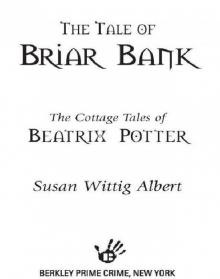 The Tale of Briar Bank
The Tale of Briar Bank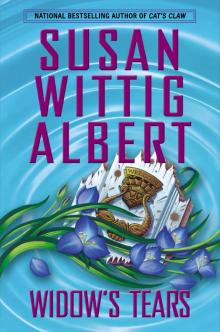 Widow's Tears
Widow's Tears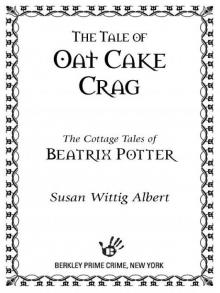 The Tale of Oat Cake Crag
The Tale of Oat Cake Crag Rueful Death
Rueful Death Bittersweet
Bittersweet The Darling Dahlias and the Poinsettia Puzzle
The Darling Dahlias and the Poinsettia Puzzle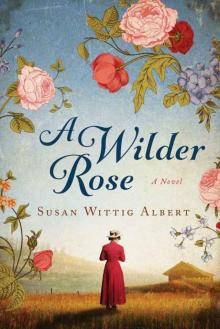 A Wilder Rose: A Novel
A Wilder Rose: A Novel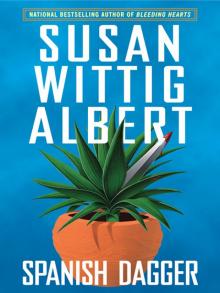 Spanish Dagger
Spanish Dagger The Darling Dahlias and the Texas Star
The Darling Dahlias and the Texas Star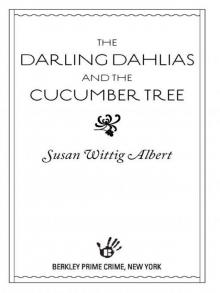 The Darling Dahlias and the Cucumber Tree
The Darling Dahlias and the Cucumber Tree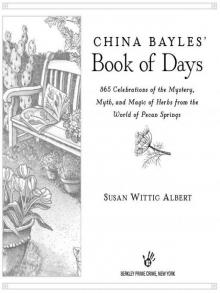 China Bayles' Book of Days
China Bayles' Book of Days Death Come Quickly
Death Come Quickly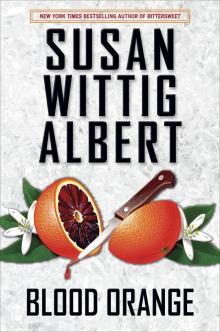 Blood Orange: A China Bayles Mystery
Blood Orange: A China Bayles Mystery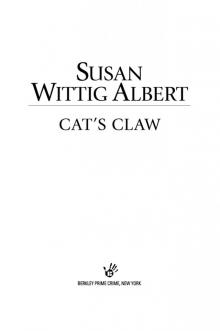 Cat's Claw
Cat's Claw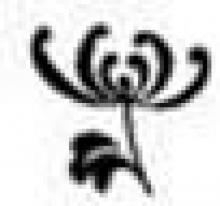 The Darling Dahlias and the Naked Ladies
The Darling Dahlias and the Naked Ladies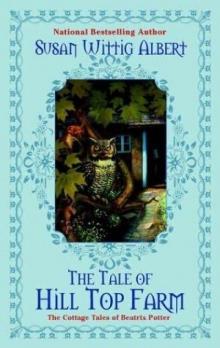 The Tale of Hill Top Farm
The Tale of Hill Top Farm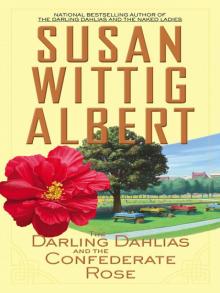 The Darling Dahlias and the Confederate Rose
The Darling Dahlias and the Confederate Rose The Darling Dahlias and the Silver Dollar Bush
The Darling Dahlias and the Silver Dollar Bush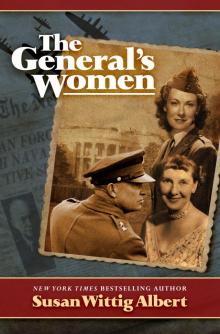 The General's Women
The General's Women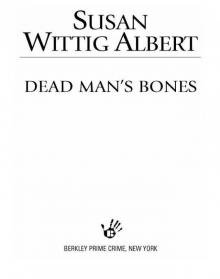 Dead Man's Bones
Dead Man's Bones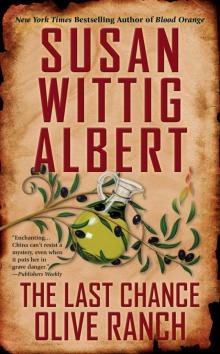 The Last Chance Olive Ranch
The Last Chance Olive Ranch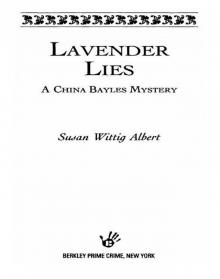 Lavender Lies
Lavender Lies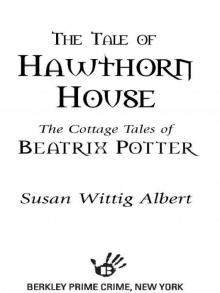 The Tale of Hawthorn House
The Tale of Hawthorn House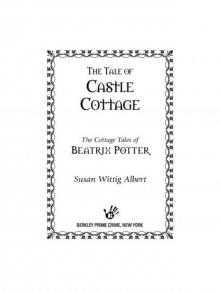 The Tale of Castle Cottage
The Tale of Castle Cottage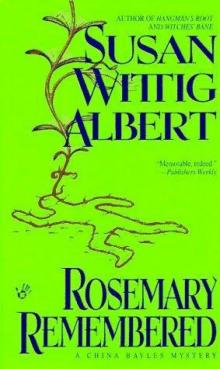 Rosemary Remembered - China Bayles 04
Rosemary Remembered - China Bayles 04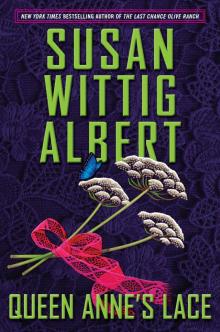 Queen Anne's Lace
Queen Anne's Lace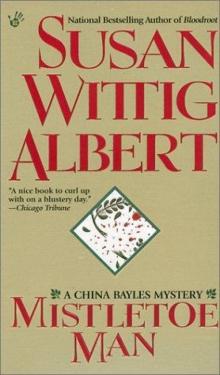 Mistletoe Man - China Bayles 09
Mistletoe Man - China Bayles 09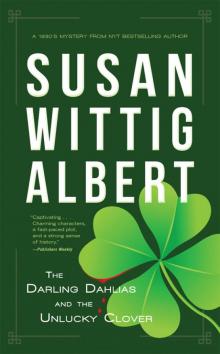 The Darling Dahlias and the Unlucky Clover
The Darling Dahlias and the Unlucky Clover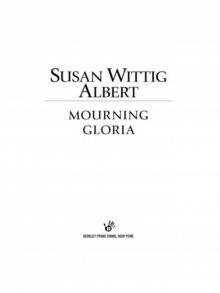 Mourning Gloria
Mourning Gloria The Darling Dahlias and the Eleven O'Clock Lady
The Darling Dahlias and the Eleven O'Clock Lady